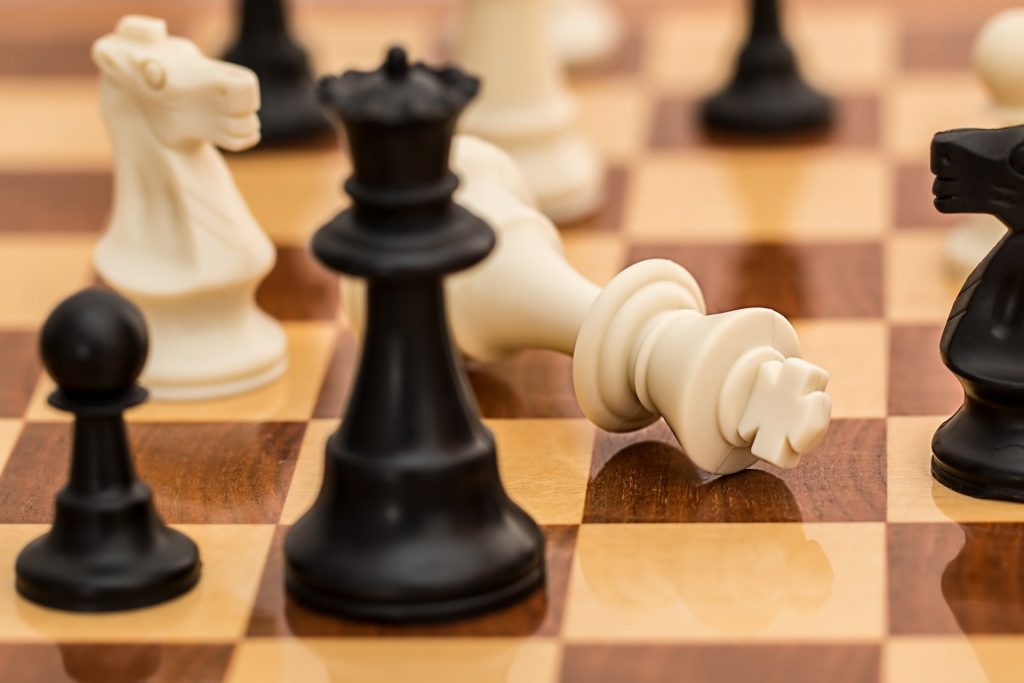This post is also available in Dutch.
Locked in the house due to the terrible combo of pandemic + cold winter, I developed a (probably worrying) symbiotic relationship with Netflix. Scrolling through the multiple series on offer, one caught my attention: The Queen’s Gambit. The series tells the story of a witty red-haired girl, who, besides her mental health struggles, is a fantastic chess player. Like the average Netflix user, I can’t help being affected by every series I watch. In this case, that meant I started playing chess, downloading apps on my phone, and checking YouTube videos for the best openings and moves. Through this, the neuroscientist in me started wondering: what are the effects of a regular chess game on the way I think? And, what actually happens in my brain when I play?
Chess is an activity that trains our mind. How does it work and which skills can you acquire from playing?
In a chess game, each move is the result of extensive reasoning. I move the pawn; I wait for your turn and in the meantime, I am thinking of all the possible moves that I could make next and how you will react to those. Everything with just one goal in mind: get rid of your pieces and eventually win your King. Sounds easy, right? In fact, this is way more complicated than it seems. To play, I first need to visualize in my mind the full repertoire of moves I am allowed to make. In technical terms, I need to use my visual working memory. Not just that. Among the moves that I see in my mind, I need to select the one that will bring me closer to my goal, in other words, your king. But I am not playing alone: you react to my moves, always creating new challenges for me. This means that I need to exercise problem-solving: analysing a situation and finding routes to solve it. In neuroscience, these skills are called executive functions and refer to the processes that help us to achieve our goals. Playing chess can train all of these executive functions to the point that teachers have considered using chess as an alternative tool to improve students’ performance in math.
Playing chess stimulates different thinking processes: from memory to goal-oriented actions. How does this happen at the level of the brain?
All the processes required for a good game result from activity inside the brain. In the past, way before the amazing Netflix series, neuroscientists studied which areas in the brain are activated by playing chess. Particular interest has been focused on the fusiform face area (FFA), a brain region that respond to faces and helps us recognising them. I found it pretty interesting to see that in chess players the FFA is also activated by the sight of a chess board. It looks like, for chess players, the board becomes a stimulus that is recognizable in the same way as a human face. Also, the more expert a player is, the more likely this area activates even when pieces are arranged randomly on the board, without respecting the canonical chess set-up. A very recent study, however, tell us that expertise in chess mostly affects the way regions in the brain are connected, and how fast these connections change over time. In professional chess players, the interconnections between brain regions change much faster and more often than in beginners. These interconnections allow different areas in the brain to communicate and share information important to perform a task. The fact that these interconnections are more dynamic in chess experts than in beginners suggests that regular practice can benefit communication in the brain.
To my surprise, I learnt that playing chess is not just fun but it has great benefits for the brain. Of course, it takes time to become an expert (and the odds are near-zero that I will ever manage one of Magnus Carlsen’s moves). But I think we should all give it a try. So, if you are a lockdown fellow: make a cup of tea, open a chess game and go for it. Your brain will be thankful 😉.
Author: Martina Arenella
Buddy: Rebecca Calcott
Editor: Jill Naaijen
Translator: Floortje Bouwkamp
Editor Translation: Wessel Hieselaar
Photo by stevpb via Pixabay

In het algemeen is gebleken dat schakers nauwelijks kunnen dammen, maar dat dammers redelijk kunnen schaken. Je kunt dus beter gaan dammen om nog grotere voordelen te halen om je brein te stimuleren.
Brain games and activities are important for brain development. kids as well youngers should play brain games that help to increase brain function intellegentlly. Thanks for sharing a great post.